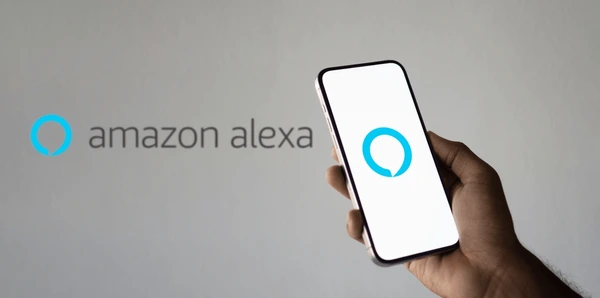The Internet of Things (IoT) is one of the most revolutionary technologies of our time. It refers to the interconnection of physical devices, such as sensors, cameras, and control systems, to the internet, allowing these devices to exchange data and information with each other and with central monitoring systems. With increasing urbanization and population growth in large cities, the concept of smart cities is becoming increasingly relevant. And at the heart of this transformation is the IoT.
Smart cities utilize advanced technologies to improve the quality of life for their inhabitants, optimize resource management, and make urban services more efficient. The IoT plays a fundamental role in this process, connecting urban infrastructure and services to create a more interactive, sustainable, and responsive environment to the needs of the population.
What is a Smart City?
A smart city is one that uses digital technologies, such as sensors, connected devices, and big data, to improve urban services and the quality of life for its citizens. The use of these technologies allows for more efficient management of city resources, such as energy, water, and transportation, as well as optimizing the operation of essential services like public safety, health, and education.
At the heart of this transformation, IoT is the backbone that connects all elements of the city, from traffic lights to waste collection systems. Let's explore some of the most impactful ways IoT is helping to make cities smarter.
1. Efficient Traffic and Transportation Management
One of the areas most benefited by IoT in smart cities is transportation. Connected sensors and smart cameras are being used to monitor traffic flow in real time. Based on the data collected, traffic light systems can be automatically adjusted to avoid congestion, reducing travel time and pollutant emissions.
Furthermore, IoT is revolutionizing public transportation, with real-time bus and train tracking systems allowing passengers to know exactly when the next vehicle will arrive and optimizing the management of transportation resources. In many cities, the use of IoT-connected shared cars and bicycles is growing, offering more sustainable and affordable transportation options.
Example: In cities like Barcelona, connected sensors are used to manage traffic and provide real-time information to drivers, helping to avoid congestion and improve traffic flow.
2. Energy and Water Consumption Efficiency
Smart cities have a strong focus on sustainability, and the IoT plays a crucial role in optimizing the consumption of energy and natural resources. Connected devices monitor energy and water consumption in real time, allowing authorities to identify areas of waste and implement corrective measures.
Intelligent street lighting systems are a classic example: lamps can adjust their intensity based on the presence of people on the streets or on natural lighting conditions, saving energy. Furthermore, humidity sensors in irrigation systems can help manage water use more efficiently in public areas such as parks and gardens.
Example: Cities like Singapore use smart sensors to monitor and optimize water consumption, ensuring that resources are used efficiently and sustainably.
3. Public Safety and Real-Time Monitoring
The IoT has a significant impact on public safety, as it allows authorities to monitor the city more efficiently. Security cameras, motion sensors, and connected monitoring devices enable police and emergency services to respond quickly to incidents such as crimes or accidents.
Furthermore, sensors in high-risk areas, such as regions prone to fires or floods, can detect warning signs and send immediate notifications to emergency services, allowing teams to prepare and respond quickly.
Example: In London, the installation of smart cameras and security sensors connected to the IoT helps monitor public areas and reduce crime rates.
4. Waste Management and Smart Waste Collection
Waste management is one of the biggest challenges for growing cities. However, with IoT, it is possible to optimize waste collection and improve the efficiency of waste management operations. Sensors installed in public trash cans monitor waste levels and send real-time data to cleaning services, allowing collection trucks to be directed only to areas that truly need attention.
Furthermore, smart waste collection allows resources to be allocated more efficiently, reducing operating costs and minimizing environmental impact.
Example: The city of San Francisco implemented waste monitoring sensors in several public trash cans, optimizing collection routes and ensuring that trash is removed before it overflows.
5. Health and Well-being of Citizens
The IoT can also improve the health and well-being of citizens in smart cities. Connected devices can monitor air and water quality, identify sources of pollution, and provide real-time data to public health authorities, enabling them to take swift action to protect the population.
Furthermore, remote patient monitoring using connected health devices can facilitate the provision of medical care remotely, especially in densely populated urban areas where healthcare resources may be limited.
Example: The city of Amsterdam implemented an air quality sensor system connected to the IoT, providing real-time information on pollution and allowing the city to take steps to reduce exposure to pollutants.
Conclusion
The Internet of Things (IoT) is transforming cities into smarter and more efficient environments. By connecting devices and sensors to central systems, cities can optimize resource management, improve urban services, and ensure a better quality of life for their inhabitants. Whether in traffic control, energy and water management, public safety, waste management, or healthcare, IoT is creating a more sustainable, accessible, and efficient future for cities worldwide.
As technology evolves, we can expect smart cities to become even more interactive, dynamic, and responsive to citizens' needs, creating a more connected and responsive urban environment. The IoT is not just the future of cities; it is already shaping the reality of many urban centers around the world, and the possibilities are almost endless.





